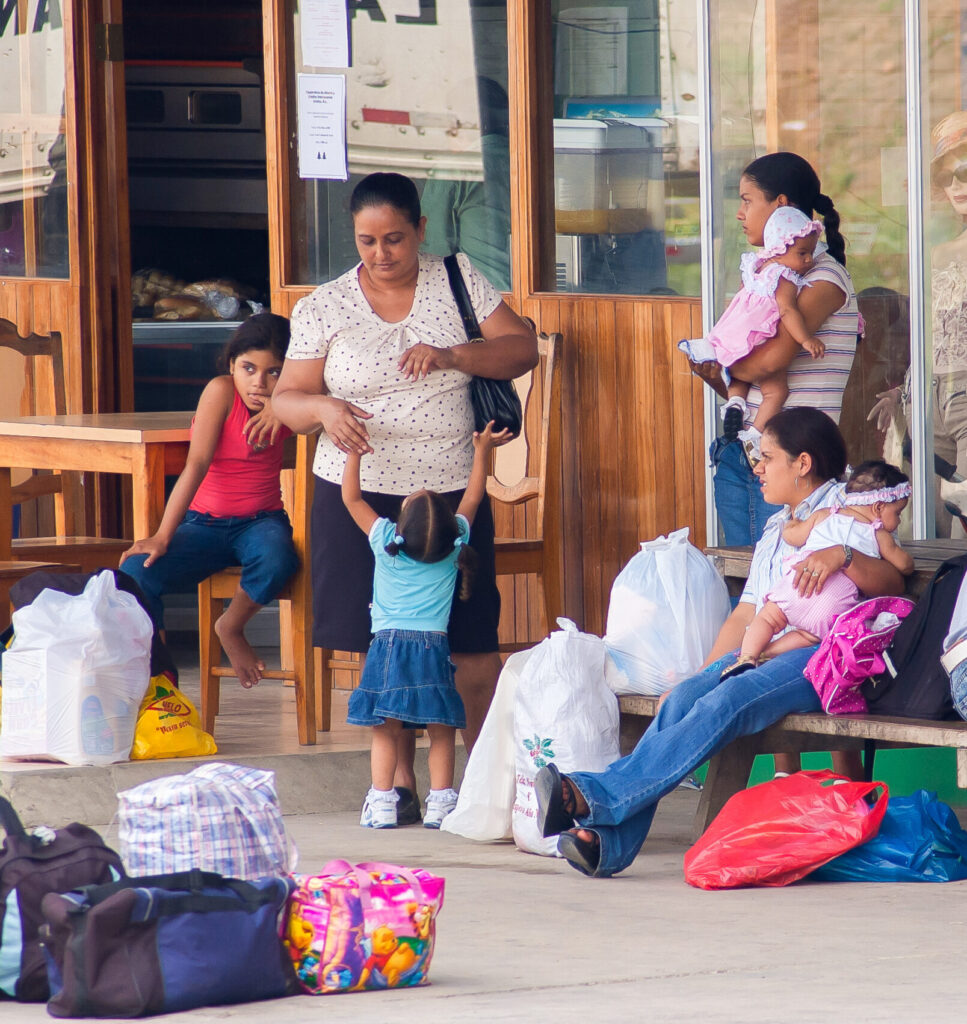
Topics
- Access Usage Gap
- Digital Transformation
- Enabling Environment
- Financial Capability
- Policy, Regulation and Government Initiatives
- Underserved Groups
- Women
Series
Financial Inclusion Week (FIW) 2022 featured over 15 hours of content exclusively focused on women’s financial inclusion, showing that women’s access and inclusion remains a top priority for the inclusive finance space. Of the 125 sessions hosted at FIW 2022, 24 focused on women’s financial inclusion – consolidated here into a Women’s Financial Inclusion playlist – and offered both breadth and depth on the most salient issues today, with contributions from speakers across the globe. The sessions offered key insights and inspiration from the efforts and energy of policymakers, bankers, researchers, donors, non-profit partners, fintechs, and other stakeholders working to improve women’s access and use of financial services.
Three consistent themes emerged from the FIW sessions on women’s financial inclusion that indicate where the inclusive finance sector needs to place greater focus and effort to reduce the financial inclusion gender gap.
1. Social Norms Dominate Discussions on the Financial Inclusion Gender Gap
The role of social norms was raised in virtually every session, whether about policy or practitioner programs. Recognizing and addressing social norms around women’s identity and ownership has led advocates and policymakers to change policies on official IDs (identities) (as discussed in a podcast session by Inclusion for All), KYC, and credit and collateral registries (see Eja Ice’s session). These changes have increased women’s access to both basic services and economic opportunities.
WFP and CARE approached norms transformation in their Digital Community Champions and Women-Centered Design programs, respectively. The engagement of men and boys is critical in addressing social norms preventing women from accessing and using digital financial services. WFP Uganda created a network of male digital champions in Nakivale settlement, which led to changes in the way women are viewed by their partners and included in financial decision-making. And CARE found that women were accessing learning content on the family smartphone from 10 pm to 2 am – after they finished domestic chores and other family members were asleep. Both programs engaged with men to foster an understanding of women’s needs and to encourage men to support women in their families and communities. CARE’s programs in Peru and WFP’s experience in a Ugandan refugee settlement successfully challenged men’s perceptions and attitudes. Their work led to increased financial inclusion, growth of women’s small businesses, and new dialogue within households about shared financial decision-making.
Digital and Financial Literacy
The impact of social norms is evident in lower digital and financial literacy rates for women. Literacy programs are increasingly becoming more practical and personalized – they are less about curriculum and classroom training and far more likely to provide tailored learning and content by leveraging women mentors (see Opportunity International’s session), peer learning, or technology like IVR, WhatsApp videos (see CARE’s session), and two-way chats. This practicality extends to ensuring that programs focused on increasing women’s digital and financial literacy are being delivered by, or in relation to, mobile money, G2P, or other providers of financial services. Halima Iqbal, CEO of Oraan – a fintech in Pakistan, noted that financial literacy without market access will not result in new women users.
GSMA found that women in Ghana tend to learn about mobile money from their family members, which raises the concern that a woman’s learning is limited to what her family knows or what her family members think she should know. Ghana’s Sinapi Aba bank successfully resolved this challenge by identifying women who actively used their digital offerings and leveraging them as mentors to help other women clients gain the confidence to take up the new digital tools.
Access
While the financial inclusion gender gap has narrowed at a global level, many markets continue to have an access gap – whether in countries where women’s mobility is constrained by social or religious norms, or in markets where their movements are restricted by work and domestic responsibilities. While “meeting women where they are” is often used figuratively, many WSBI partners are working on more literal approaches. Banking in a Bag from Kenya Post Bank brings services directly to women’s doorsteps, as do Susu collectors in Ghana working to support women in gaining digital access. Other programs placed women’s desks in bank branches to provide women their own space in a potentially unfamiliar, and sometimes unfriendly, banking environment (see Graça Michel Trust’s session). Additionally, using roving agents (discussed in a session led by Good Business Lab), leveraging women agents, and activating agents in women-only spaces like beauty parlors (raised in a session organized by Kashf Foundation) can help to reach women clients.
2. For Clients to Change Behavior, Organizations Must First Change Theirs
Technology is the biggest change for institutions currently serving low-income clients and underpins the business case of most, if not all, of the programs and products shared during FIW 2022 (highlighted by Deloitte’s session). From digital outreach and financial literacy to machine learning and credit scoring algorithms, the role of technology in lowering costs and increasing scale to make business cases viable cannot be overstated. GSMA pointed out that even when women have access to a mobile money account, they use fewer available financial products than men, demonstrating that continued research and donor funding are needed to unlock usage issues.
Organizational change was a common thread across many of the sessions that featured existing financial services partners going through the digitalization process. Global Communities engaged organizations early in the process with a digital preparedness checklist to ensure organizational readiness. Vitas Group faced issues with resistance to the costs of experimentation by the core business but was able to resolve this by separating their innovation hubs from their businesses and making them independent organizations. The digital transformers in the WSBI Scale2Save program made much larger changes, including the creation of new internal data science teams.
Organizations’ New Approach to Segmentation
One area of agreement among policymakers, advocates, and financial services providers was clearly the need to collect and use sex-disaggregated data. In addition to understanding how and what products women are using, presenting organizations are also seeking deeper and more nuanced views of women clients to better segment the women’s market. Financial services providers are increasingly viewing women as migrants, refugees, rural, people with disabilities, or as operators of nano– or MSME businesses, including those engaged in specific value chains. By better understanding women’s needs, providers are focusing on raising product awareness and improving marketing approaches for existing products that meet those needs, while also developing new products. All while focusing on product sustainability and viability.
There was a clear call to better leverage G2P payments and ensure that digitizing these payments goes beyond simply being an efficient “pipe” for delivery. Instead, presenters encouraged connection to opportunities for greater utility in the broader financial ecosystem, including enabling small business growth and health care and education access. Partners engaged in specific value chains (like fish or chilies) are successfully increasing women’s borrowing, while organizations like LAPO are seeking to address women’s needs as mothers, offering incentivized savings products with health insurance for their families. There is clearly more to be done, but the sessions from FIW 2022 offer dozens of examples of successful approaches to build upon.
3. Moving Towards Gender Transformative Policy
Financial policies, products and services, and regulations are typically designed in a gender-neutral manner, which tends to better serve men. Regulations ignore the role played by social norms and can perpetuate or exacerbate issues of mistrust and make it difficult for women to use financial services, including digital tools. Sessions from the Graça Machel Trust Expert Leaders Group and the Financial Sector Deepening Trust leaders focused on high-level policy issues, including the need for national financial inclusion strategies to address social norms. Many of the other sessions also covered issues of policy, sound payment systems, and trust.
Financial policies, products and services, and regulations are typically designed in a gender-neutral manner, which tends to better serve men.
Advocates emphasized the need for regulators to collect sex-disaggregated data to better understand, highlight, and address barriers to women’s inclusion. Sex-disaggregated data has been used to inform national policies for women’s financial inclusion in Ghana, Nigeria, Zimbabwe, and other countries. However, collecting sex-disaggregated data, which was a topic in many practitioner sessions as well, is not as straightforward as it may seem and requires stakeholders to work together to define what data should be collected, ensure that the data will be used, and guarantee that data is stored in accessible and secure channels.
Reforming credit bureaus and creating collateral registries and digital IDs are key policy moves that can improve access for women and strengthen the financial system overall. These discussions implicitly indicate the need to shift from a gender-neutral lens to a gender transformative lens when thinking of policy and regulatory design.
It should be noted that many policy issues were not discussed – including privacy, algorithmic bias, and deceptive marketing, among others, all of which require gender sensitive and gender transformative policy responses. For more information, visit the FIW 2022 Consumer Protection Playlist and the FIW 2022 Data Risks & Opportunities Playlist.
Conclusion
The focus on women’s financial inclusion extended far beyond just the sessions “tagged” as such and the topic of women is addressed in almost all FIW 2022 presentations. This momentum, and the more systemic approaches that were shared, give us hope that the gender gap will continue to close in both size and scope, as we work to ensure that women are not just included but are actively using appropriate and responsible financial services that will enable them to seize economic opportunities and build resilience for themselves, their families, and national economies.
View the full Women’s Financial Inclusion Playlist from FIW 2022.
Financial Inclusion Week 2022 had over 3,300 registered participants from 2,000 organizations across 148 countries. With almost 400 speakers and 125 sessions, FIW 2022 was the largest event to date. All sessions from FIW 2022 can be viewed here.
And be sure to save the date for FIW 2023 which will take place October 16-19, 2023.










